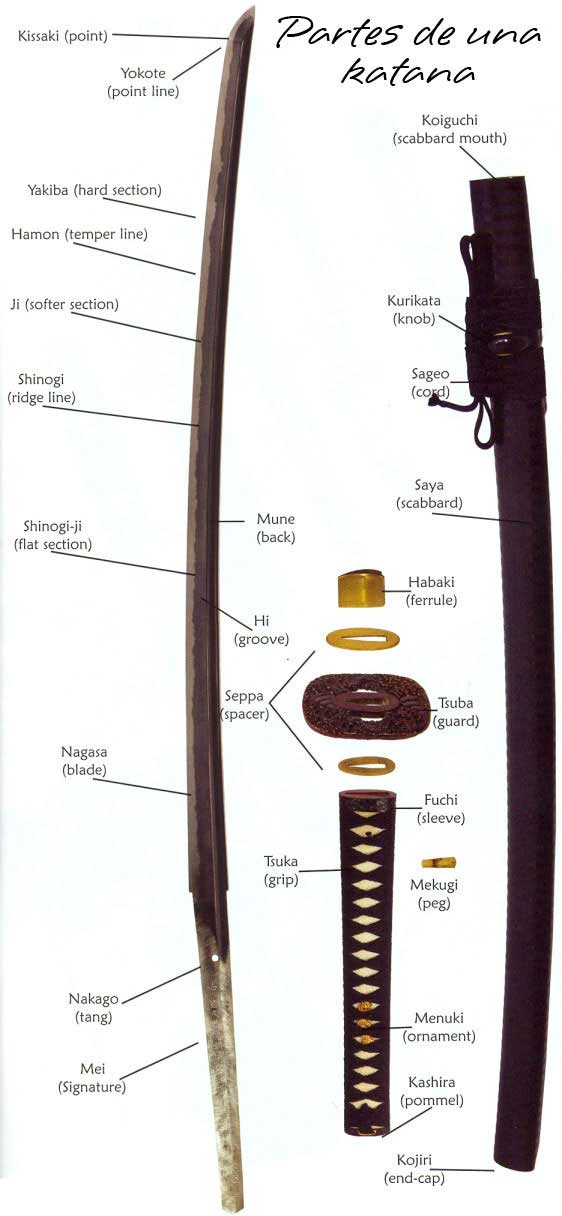What is the Fuchi?
The Fuchi is an essential component of the hilt of the katana, one of the most iconic swords in Japanese culture. Located at the base of the hilt, the Fuchi not only adds an ornamental touch but also serves practical functions that are crucial for the proper use and handling of this traditional sword.
In terms of materials, the Fuchi is usually made from highly resistant and durable metals, such as iron, copper, or brass. The choice of these materials is due to the need for resilience and aesthetics. Frequently, the surface of the Fuchi features elaborate designs and patterns that can have deep meanings, ranging from narrating stories about the owner's lineage to reflecting their social status and the legends of Japanese mythology. This wealth of detail not only adds aesthetic value to the katana but also reflects the craftsmanship and cultural tradition of Japan.
From a functional perspective, the Fuchi secures the Tsuba, which is the disc-shaped handguard. Without this fundamental piece, there is a risk that the Tsuba may shift or move during use, which could compromise the user's safety and control. On the other hand, the Fuchi also contributes to the katana's balance, allowing for more stable and precise handling during the practice of Kenjutsu and in combat situations.
Furthermore, the Fuchi requires proper care and maintenance to ensure its durability and functionality. It is advisable to clean and lubricate it regularly to prevent issues of oxidation and corrosion. Periodic attention is also crucial for spotting scratches or damages that could compromise both its function and appearance. Preserving the Fuchi not only ensures the stability of the Tsuba but also maintains the aesthetic integrity of the katana as a whole.

It is important to mention that knowledge about the Fuchi goes beyond its practical function; it is a gateway to appreciating the history and philosophy surrounding the katana and its use. Understanding the importance of each component, from the Fuchi to the blade, allows enthusiasts and practitioners to connect more deeply with this millennia-old tradition. Thus, the Fuchi becomes a symbol of not only art and functionality but also of a rich and abundant cultural legacy.
















